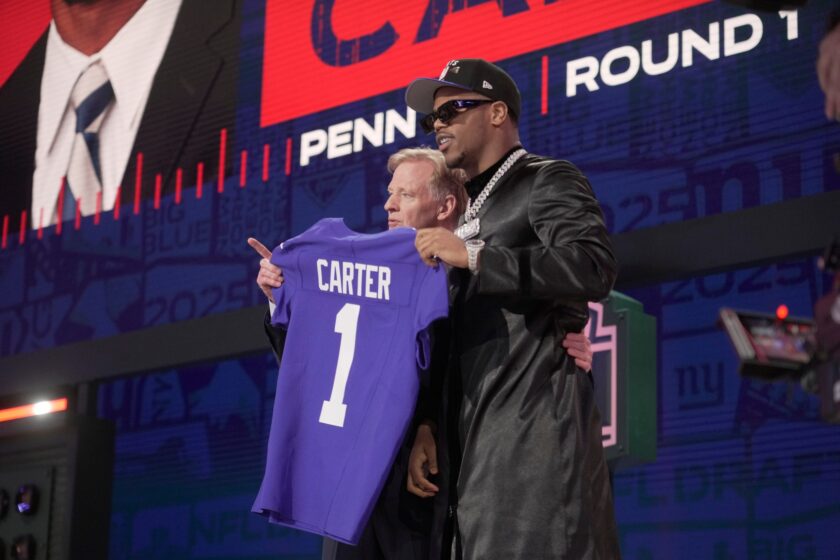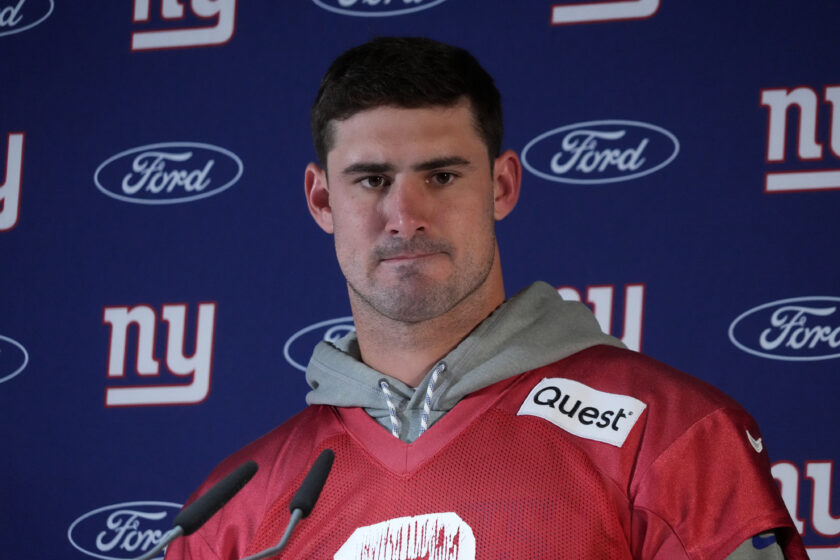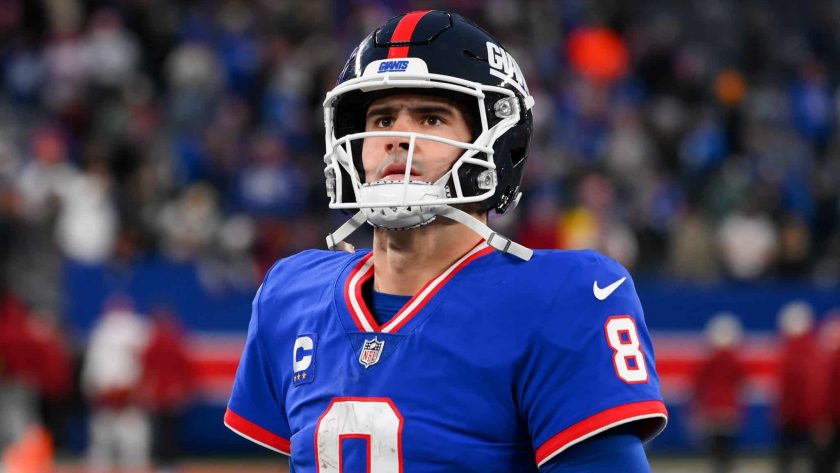New York Giants: Saquon Barkley can awaken a sleeping offense
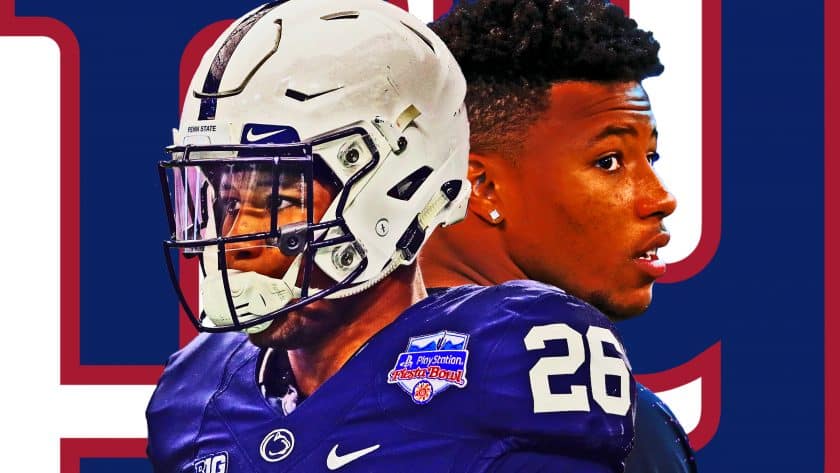
As they continue to ponder what to do with the second overall pick in next week’s draft, the New York Giants have to consider who best puts the “V” in “MVP”. In the midst of an NFL rushing revolution, Saquon Barkley defines that initial best.
The New York Giants are not the Cleveland Browns.
Even disregarding the huge color discrepancy, it’s rare to see the pair in the same sentence. The Giants, until recently, were seen as a model professional football franchise, while the Browns could write a textbook on how not to run a business. Yet, 2017 brought them together, if only briefly on the ensuing year’s NFL draft board.
Picking this high, second overall to be precise, is not part of the Giants culture. Since the turn of the century, the Giants have made their first draft selection in the top 10 only four times (albeit three of those occasions coming in the last four years). By contrast, the Browns this will mark the third time the Browns have had the first pick alone since their 1999 revival, and the seventh time they’ll choose in the top trio in that same span.
It’s unfortunate for Cleveland’s loyal fans, but selecting high in the draft has become a staple of Browns’ culture, a more time-honored tradition than the Dawg Pound, cursing out Art Moddell and The Drew Carey Show. The Giants, selecting second overall for the first time since they took Lawrence Taylor in 1981, aren’t trying to make this a yearly ritual, so they’ll look to make a splash, find someone who can quickly bring them out of the depths of the league and back to respectability.
In this regard, Penn State running back Saquon Barkley is the team’s best option.
If the Browns don’t take a quarterback with the top overall selection, it’ll become the biggest Cleveland over New York upset since Ricky Vaughn struck out Clu Haywood. After welcoming in Carlos Hyde and retaining a solid spell option in Duke Johnson, the Browns likely aren’t interested in a running back. Thus, it’s likely they’ll go after a franchise quarterback, a search that began during the George Bush administration—the George H.W. Bush administration—and has claimed the careers of dozens of victims along the way.
[sc name=”Giants Center”]Cleveland’s ancient search opens the door for the Giants to fully analyze Barkley, a move that can the team’s offense back from the dead.
The Giants’ offense last scored 30 points in their 2015 regular season finale, falling to the Philadelphia Eagles 35-30 at MetLife Stadium to close out a disappointing 6-10 campaign. In today’s NFL, dominated by fantasy football, expecting a strong defense to fully pick up the slack for an inept offense, a la the 2000 Baltimore Ravens, isn’t sustainable. The Giants learned this the hard way in 2016.
The team posted an 11-5 record, their best win tally since 2008, but they failed to crack even 20 points in nine of their 16 regular season games, including their final five. Strong defensive performances, headlined by Landon Collins‘ breakout and a free agent triumvirate of Olivier Vernon, Damon Harrison, and Janoris Jenkins dependably bailed out the struggling unit, and the Giants reached the playoffs for the first time since 2011.
That trend continued in their playoff cameo in the NFC wild card round in Green Bay. When the defense fell, so did the Giants, and they were gone as quickly as they came in a 38-13 defeat to the Packers.
Throughout that season, the Giants’ offensive leaders expressed a desire for blowout wins. Of the team’s 11 wins, all but two came by single digits …and one was against a winless Cleveland team.
“We’d love to come out and beat a team 45-14. Why not?” receiver Odell Beckham Jr. rhetorically asked after a 22-21 win over Cincinnati in November 2016. “I’m a firm believer in that you work all week for 60 minutes of football. As an offense, you’re not going to be on the field for 60 minutes. Why not make the most of the opportunity that you have now?”
This is where Barkley can truly make a difference.
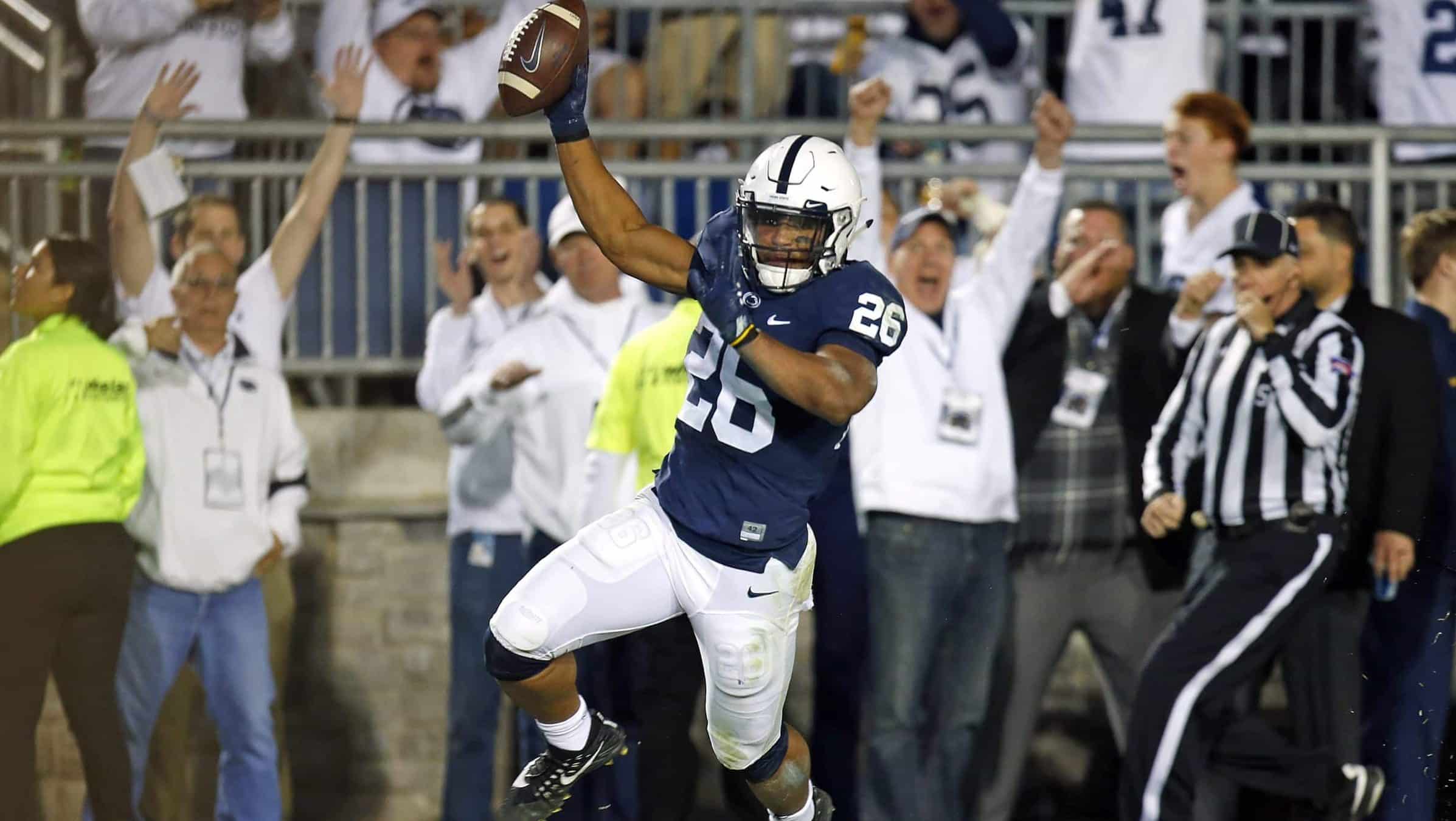
The Giants have interested themselves into NFL royalty thanks to a balanced history. The team is probably best known for it’s hard hitters, headlined by guys like Taylor and Michael Strahan, but offensive exploits on the ground are well represented both on the walls of Quest Diagnostics Training Center and on game day at MetLife Stadium.
Long before Earth, Wind, and Fire (aka 2008 rushers Brandon Jacobs, Derrick Ward, and Ahmad Bradshaw) helped end the Patriots’ run at perfection, fullback Ken Strong famously scored in sneakers to defeat the undefeated Chicago Bears in the 1934 NFL Championship Game. Ottis Anderson’s MVP performance to beat the Buffalo Bills in 1991 remains one of the best individual efforts in Super Bowl history. Few will forget Bradshaw reluctantly scoring to beat the Patriots a second time in 2012.
Lately, however, the run game has fallen on hard times. The Giants have not finished in the upper half of the league’s rushing tallies since 2010, the same year they last had a 1,000-yard rusher. Veterans like Rashad Jennings, Shane Vereen, and Orleans Darkwa have done what they could behind a neglected offensive line, but too often has an aging Eli Manning called upon to single-handedly win games. The lack of a truly explosive rusher has killed the Giants’ chances of successful play action scenarios, and turned the offense into a one-dimensional unit.
The indifference toward the run game almost seemed understandable with the way the league’s tides were turning. Between 2008 and 2014, Super Bowl champions featured only two 1,000-yard rushers (Ray Rice with the 2012 Ravens and Marshawn Lynch with the 2013 Seahawks). In that same span, the champion finished outside the top 20 in rushing in four of seven years. In fact, when the Giants captured their most recent Super Bowl title after the 2011 season, the team finished dead last in rushing.
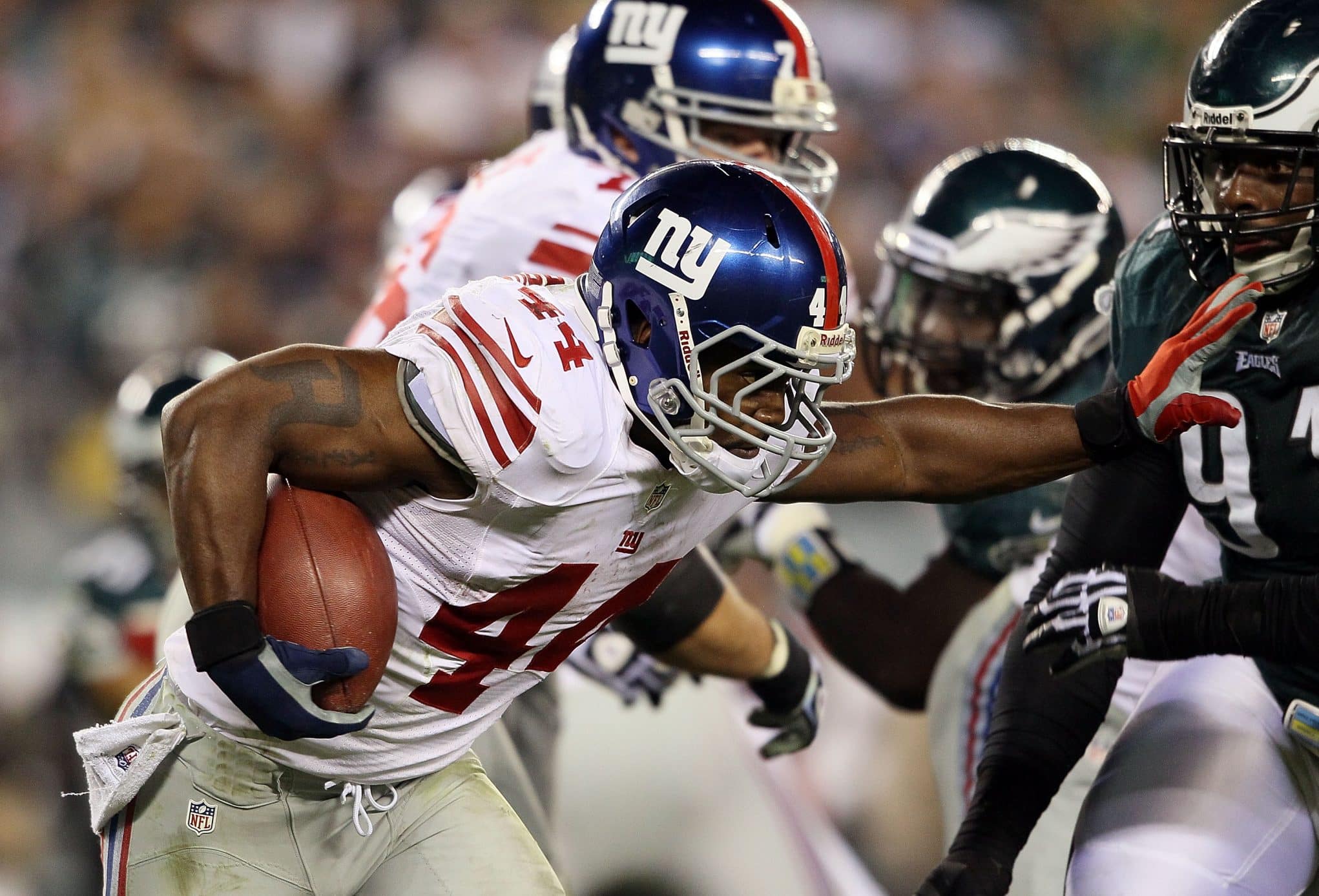
The trend spread to the draft, as the first rounds of both the 2013 and 2014 drafts saw no running backs selected in the first round. From 2009-14, only two (CJ Spiller in 2009 and Trent Richardson in 2012) were taken in the top 10. This was a stark contrast from 2008’s proceedings, which saw five rushers go in the first round alone. To put it lightly, the days of the running back were dying, the era of game-changing rushers nearly extinct.
But in 2015, seeds of a rushing revolution began.
It technically began in St. Louis, as the Rams took Georgia’s Todd Gurley with the 10th overall pick. Five selections later, their future Los Angeles brethren, the Chargers, took Melvin Gordon out of Wisconsin. Later in the draft, Arizona landed FCS stud David Johnson from Northern Iowa, and the Miami Dolphins added Boise State’s Jay Ajayi two rounds later.
The impact of each rusher was felt quickly. Johnson and Gurley quickly compensated for mediocre passing games, and Ajayi would do the same when he earned full-time starting duties a year later, helping the Dolphins to their first playoff appearance since 2008. In California, Gordon provided the Chargers a long-sought answer in the backfield, meshing well with veteran Phillip Rivers.
[sc name=”NFL Center”]While Ajayi was headlining an anemic offense in Miami, a rookie was helping do the same in Dallas. The Cowboys made Ezekiel Elliott the first rusher selected in the top five since Richardson, but unlike Richardson, Elliott did not disappoint.
When the Cowboys’ franchise quarterback, Tony Romo, went down with another injury, Elliott helped ensure another Romo-free swoon, which befell their 2015 march. Dallas wound up with a 13-3 mark, their first such posting since 2007.
Perhaps even more remarkably, the runners’ value only increased in their absences. When Gurley struggled to the tune of a 3.2 average in 2017, the Rams likewise fell, forcing pressure on their rookie quarterback Jared Goff.
While Gurley regained his rookie form last season, guiding both Goff and the Rams to a highly successful year and making the Rams one of free agency’s prime destinations, Elliott’s six-game suspension, stemming from a domestic violence incident, sank the Cowboys.
In Elliott’s forced departure, Dallas fell out of the NFC East championship conversation, scoring just 22 points in a November losing streak that wound up costing them a playoff spot entirely.
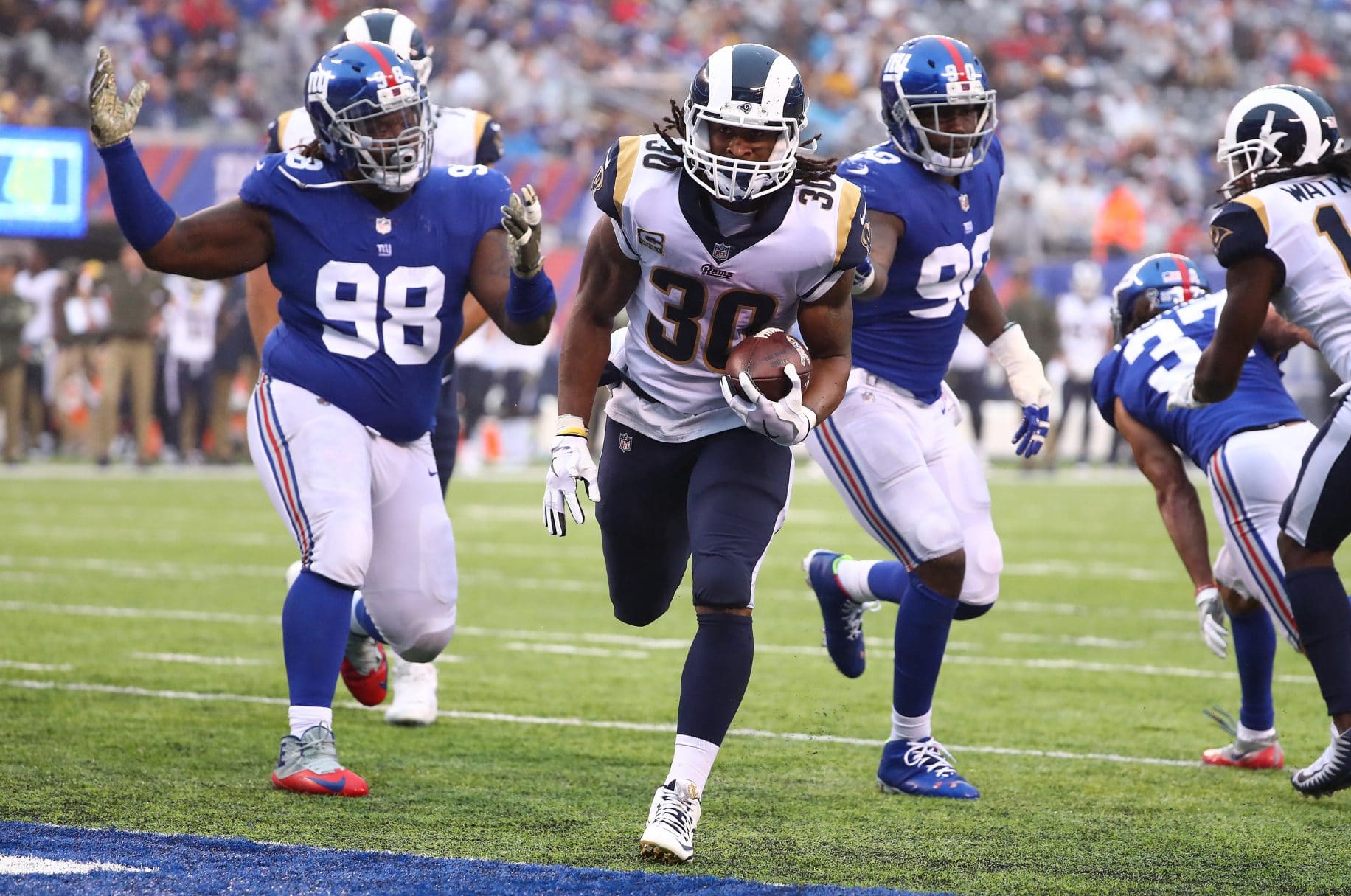
So what does all this have to with the Giants? Barkley can be their Gurley, their Elliott.
Under Barkley’s rushing rule, Penn State football officially reintroduced itself to the national college football scene. It was against a New Jersey-based team, in fact, that Barkley first showed up on the football radar, breaking loose for 195 yards and a pair of scores as a freshman in the Nittany Lions’ 28-3 win. Though Penn State closed out that 2015 season with a mediocre 7-6 mark, happy times were back in Happy Valley.

The aforementioned trend of a rusher carrying the team applied to Penn State in the final two years of his tenure. In his sophomore and junior years, the Lions were 9-1 in games where Barkley tallied at least 100 rushing yards, the lone outlier being an explosive Rose Bowl where Barkley tallied 194 yards, but the Penn State defense allowed 52 points against USC. When Barkley scored a touchdown of any kind, the Lions posted a 21-3 record.
This is the type of production the Giants need going into the uncertainty that will be the twilight of the Manning-era. In today’s league, a team is only as strong as its biggest playmaker. Naturally, that spot on the Giants is filled by Odell Beckham Jr. until further notice, but with the receiver double teamed for a majority of the game, establishing a ground threat is crucial. Barkley would give opposing defenses another showstopping player to prepare for, a runner who could go from sideline to end zone in the blink of an eye.
Barkley is, perhaps the Giants’ best solution to prepare for the post-Manning era as well. It seems ludicrous that a running back is the ideal successor for one of the most accomplished quarterbacks in NFL history, but with a weapon likely Barkley, part of the weight that would be immediately placed on Davis Webb would be removed. Webb is going to face pressure either way, probably fifty times what Didi Gregorious had to deal with when he took over for Derek Jeter. But with help from a fellow youngster, Webb would have one less thing to worry about.
[sc name=”City Stream”]What, then, would become of the running backs the Giants currently have on the roster? Let’s, if briefly, disregard Jonathan Stewart, who, if anything, could serve as a strong veteran mentor to Barkley upon his entry to the league. The concern is more toward Wayne Gallman, the Giants’ fourth round selection who began to earn a lion’s share of carries as the season went on. A Barkley and Gallman combo, however, could help the Giants cash in on another strong trend permeating through the strong teams of the NFL.
To go back to Ajayi, he was sent off to the Philadelphia Eagles at the trade deadline this season. Though the Eagles lost multi-faceted veteran Darren Sproles earlier in the year, they went on to establish a young, explosive hydra behind Carson Wentz and Nick Foles.
Free agent addition LeGarrette Blount went on to provide both veteran leadership and big runs, and, when he needed a break, the pounding continued with Ajayi and rookie Corey Clement, who turned out to be one of the most valuable undrafted free agents of 2017.
The Eagles rode that strategy to their first ever Super Bowl title, while AFC finalist Jacksonville (Leonard Fournette, Chris Ivory, TJ Yeldon), celebrated its return to relevance by leading the league in rushing. If Stewart sticks around or if Paul Perkins can regain the promise he showed as a rookie in 2016, the Giants can adapt a similar strategy.
When analyzing the unpredictable minefield that is the NFL Draft, one needs to find the player that can be an MVP. Never forget what the middle initial stands for: valuable.
Of the countless prospects available to the Giants next week, no one will define that letter better than Barkley.
[sc name=”Twitter Follow Link” text=”Geoff Magliocchetti” username=”@GeoffMags5490″ ] [sc name=”Giants Center”]
